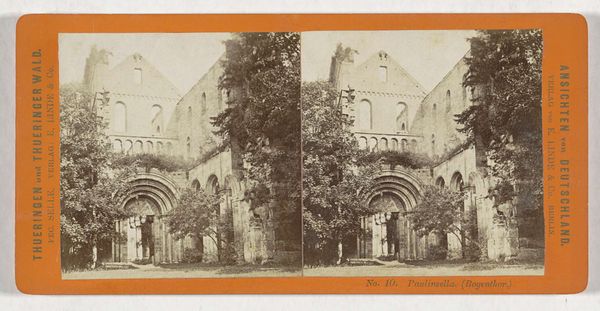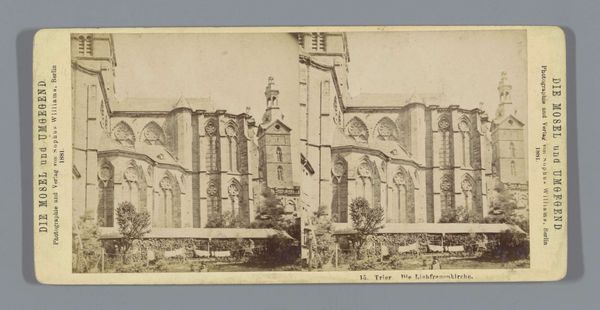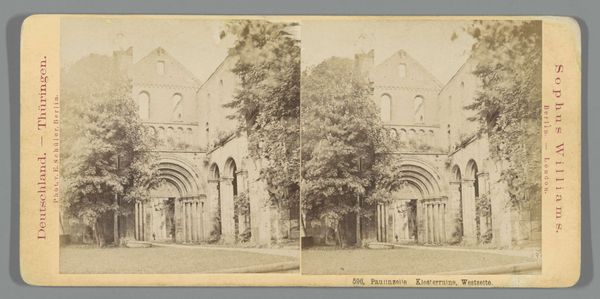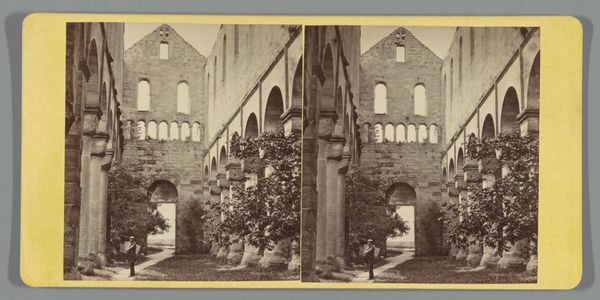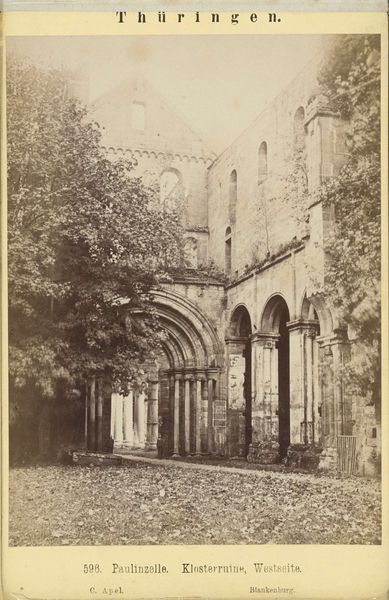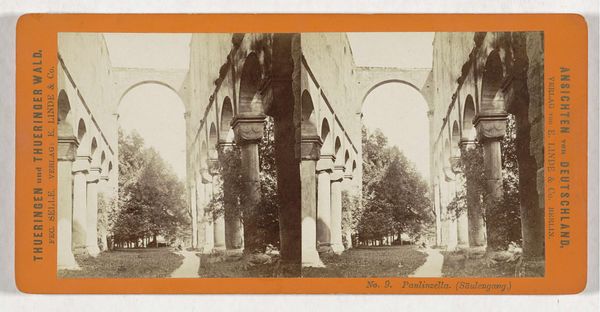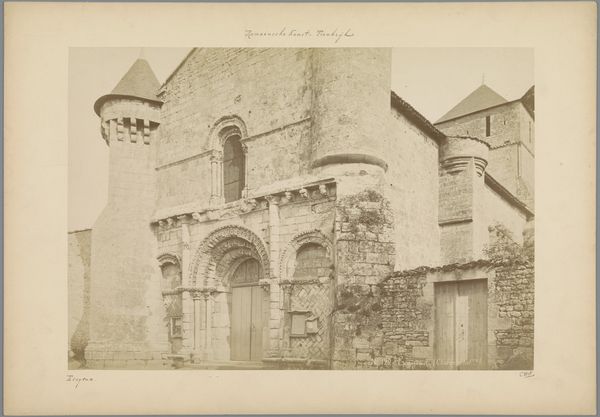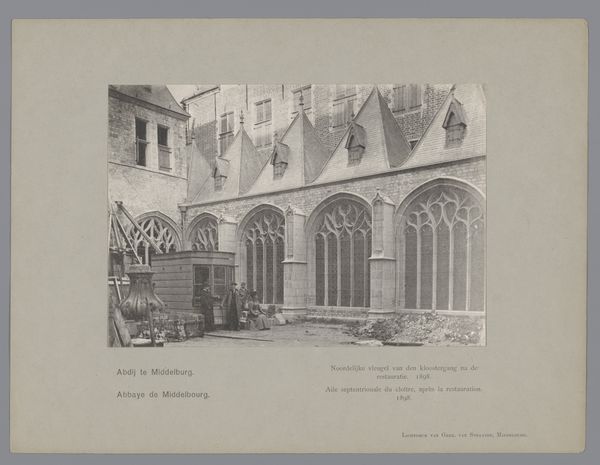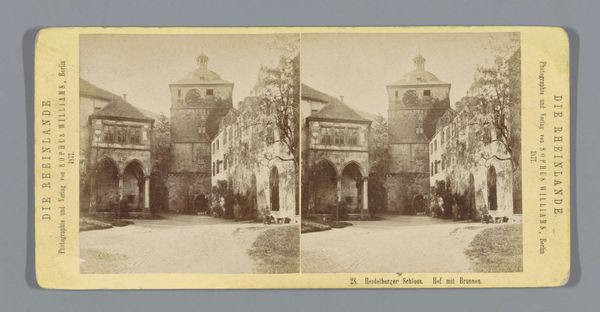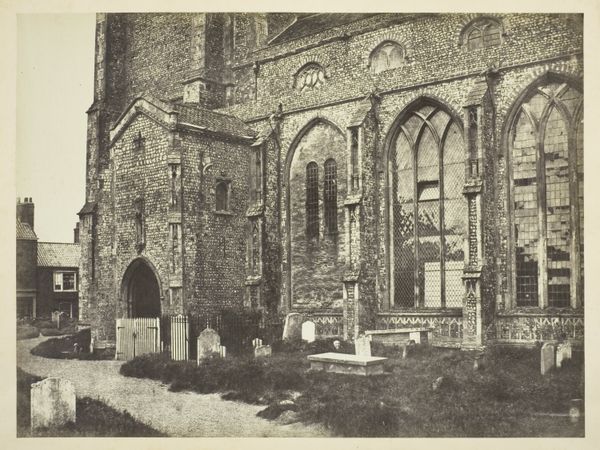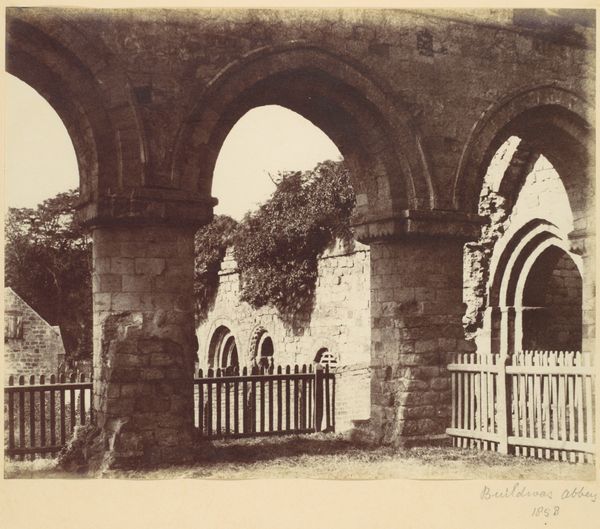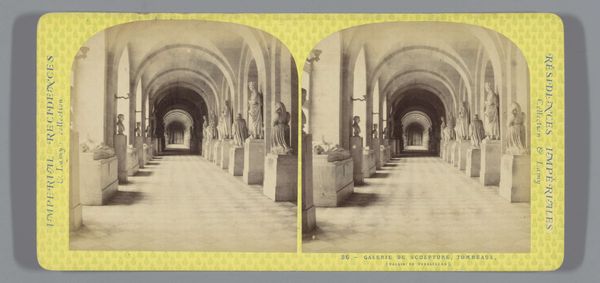
Dimensions: height 85 mm, width 170 mm
Copyright: Rijks Museum: Open Domain
Curator: Let’s turn our attention to this fascinating stereo card, a gelatin-silver print entitled "Ruïne van het Klooster van Paulinzella" attributed to Sophus Williams, dating roughly from 1860 to 1880. Editor: My first impression is one of stark, melancholic beauty. The ruin seems suspended between the grandeur of what once was and the inevitability of decay. Curator: Precisely. And what's significant here, beyond the aesthetics, is the physical act of photographic reproduction. This print, like countless others, participated in a Victorian era frenzy for image collecting, think about the sheer labor involved in producing these for mass consumption! It’s a process of image commodification. Editor: That commodification had social implications. Photography, though nascent, offered access to imagery across classes. How did the consumption of idealized landscapes and architectural ruins like Paulinzella shape notions of national identity or historical consciousness? Curator: It created an engagement through visual accessibility. What's the impact on photographic practices as art through architecture in representing power through space and memory, that is constructed for an audience? Editor: Right, because the ruin, presented in a Romantic landscape style, operates as a symbol. Paulinzella, once a significant monastery, now stands as a visual reminder of the ephemeral nature of institutions and belief systems. I find this particular example especially potent given Germany’s complicated relationship with religious institutions and the legacy of Romantic nationalism. Curator: You bring up such critical and cultural connections there. Considering that its site-specific, it suggests even more labor: travelling to and documenting architecture on film with bulky camera equipment of the day to engage in practices that became a sign of the culture's development, not just artist expression or the artist’s intention. Editor: Exactly. Sophus Williams’ work contributes to a visual narrative imbued with the aesthetics and ideological frameworks of its time. Examining these visual tropes helps deconstruct what stories about history were being told, and to whom. Curator: A powerful point about the stories and to whom these visual forms were made to be shared for others consumption and meaning-making processes, in the culture industry and mass distribution efforts. Editor: A perspective on process of production alongside its powerful visuals is critical. Curator: Absolutely, let's hold onto these thought-provoking connections.
Comments
No comments
Be the first to comment and join the conversation on the ultimate creative platform.
